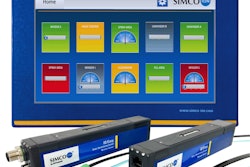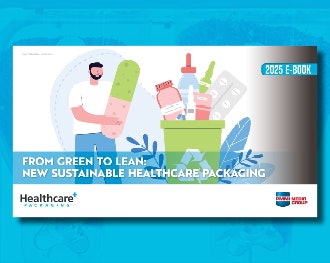As the countdown to Sunrise 2027 accelerates, brand owners and CPGs face mounting pressure to adapt packaging for the dual-barcode era—where 2D codes will appear on-pack alongside traditional 1D UPCs. For packaging professionals, the shift isn’t just a regulatory hurdle; it’s a strategic opportunity to deliver richer data, support transparency, and streamline supply chains. But getting there requires tight coordination across packaging, IT, compliance, and brand teams, all with a clear understanding of what retailers need.
At the recent GS1 Connect panel “From Production to POS: 2D Barcodes for Brand Success,” brands and retailers demonstrated that they’ve been underway on this project for some time. Paul Wawrzyniak, enterprise systems manager at Wegmans Food Markets, and Prakash Christopher, director of digital identification and traceability at Kenvue Brands, are two prominent examples. Their perspectives, grounded in retail readiness and brand execution, respectively, offer a blueprint for how CPGs should be thinking about packaging today.
Why? Because it’s coming, driven by retailers. While Wegmans hasn’t yet mandated 2D barcodes from its suppliers, the grocery retailer is laying the groundwork. When asked: “Has Wegmans set a compliance date for having 2D barcodes for its [brand owner] suppliers?”
He answered, “We have not formally notified our suppliers on that. We are discussing and talking about a letter to go out, and the wording of that. It’s two things: [First]... confirming knowledge that this is coming. Part of our challenge is communicating and explaining the value statements of this, and why manufacturer suppliers will want to embrace this and add it to their products. [Second]... there are hundreds of application identifiers [also called AIs]. And we encourage all [brands] go through that list. Don’t just look for the few that you think you’re going to use. Review them all and then challenge and ask, ‘why is that even an identifier that’s available?’ As we go through the product line, whether you’re manufacturing it, if it’s CPG items in the center store, or dry goods, there may be a different set that’s applicable, but they’re all value added. As a retailer, we want to hear back on which are the ones you’re selecting, and we want to share the ones that we believe are high value to us.”
Collaboration between brand and retailer in deciding which identifiers to use is key. Most 2D barcodes can only occupy so much label space, and their resolution can be only so dense before losing scanability. Given these constraints, brands and their retail partners have to prioritize together which suite of identifiers is optimal, delivering the highest values for all parties.
“Again, there are hundreds of [identifiers],” Wawrzyniak explained. “What we want is collaboration. We want to hear back from suppliers on which ones they’re selecting—and we’ll share the ones we believe are high value. Because of the density constraint, we won’t put 100 indicators into a QR code. But even three to five, if well-chosen, can deliver huge value.”
That finite space on-pack is especially important for packaging engineers to consider—as more data is packed into 2D codes, and density is limited, they grow in size. This may disrupt established brand aesthetics and layouts. “It comes back to packaging, the marketing, and the aesthetics,” he said. “Please [place] it very close to the 1D. In the future, someday you’ll be able to drop [the 1D code].”
Inside Kenvue
Kenvue, the consumer health company behind brands like Band-Aid and Tylenol, is already deploying 2D barcodes, and doing so at scale. According to Kenvue’s Prakash Christopher, the company is actively printing 2D codes on 200 to 300 SKUs, and the implications for packaging design have been significant.
“Your story might not be ready when you launch the product. But through the 2D code, you can continuously add digital content without changing the artwork. That’s a pretty big value for us,” he said.
“If I make a size [of a code] that is even a little smaller, the scanners will not be able to scan it,” he noted. “We built SOPs and work instructions to ensure the integrity is designed in. That goes from our brand portal all the way to the printers.”
Kenvue is starting with GS1 Digital Link barcodes that carry the GTIN (Global Trade Item Number), but Christopher said the company’s healthcare processes already include additional elements like serial numbers and expiration dates—and that sophistication is gradually making its way into consumer-facing packs, too. What’s more, the company sees dynamic QR codes as a storytelling tool.
Packaging constraints and the 50-mm rule
Both Christopher and Wawrzyniak emphasized the importance of code placement. Scanners, particularly at POS, must be able to prioritize the 2D code—and that only happens if it’s physically close to the 1D, like 50 mm or closer.
“It takes less than milliseconds for a scanner to pick up the code,” Wawrzyniak said. “If they’re far apart, your cashiers won’t catch the 2D. We want it to be the primary.” He once again added, “Be sensitive to the 50-mm rule—closer is better.”
Christopher also noted that limited real estate on-pack has prompted tough decisions. One of the biggest challenges right now is accommodating both 1D and 2D barcodes on the same package—at least during the transition. “We have to have a combination of barcodes… so finding space on certain products, just to make sure the size is not too small or becomes unscannable downstream,” has been difficult. Internally, there’s been a lot of “back and forth with what we need to do with the physical product. Can we remove some marketing content? Can we just use the 2D barcode to link to regulatory content?” But brands can’t remove the regulatory content from the package itself, so something’s got to give.
A word from GS1
Steven Keedie of GS1 Global Office, who helped lead the panel, reminded attendees that the industry doesn’t have decades to refine this transition like it did with 1D barcodes.
“With the UPC, we had 30 years to get it straight. Now we’re living in a dual-barcode world,” he said. “The 2D barcode is going to be multi-purpose—not just for the consumer, but for POS, for regulators, and for the supply chain. And that requires collaboration, standardization, and testing.”
He also clarified a common misconception: UPCs will still work at the scanner for the foreseeable future. But brands may choose not to use them if the 2D does the job.
“We’re not sunsetting the UPC,” Keedie said. “But once we reach 90% readiness at retail, brands can start reclaiming their real estate by using a single 2D.”
Solution providers power the transition
While retailers and brand owners are driving the demand for 2D barcode implementation, solution providers like Datalogic and Scanbuy are playing a role in making it technically feasible and scalable.
“Datalogic has been reading 2D codes for over 20 years,” said Scott Jackson, product manager at Datalogic. “But for Sunrise 2027, we’ve updated our entire scanner portfolio to be GS1 Digital Link–compliant. Whether you’re using handhelds in a warehouse, bioptic scanners at checkout, or mobile computing in-store, all of our equipment can be configured to prioritize 2D codes and deliver the speed and accuracy retailers demand.”
He also pointed out the importance of firmware flexibility, especially during the transition phase. “Not every retailer or supplier is ready to process full 2D data. That’s why we offer configuration modes that allow you to extract just the GTIN initially, and then scale up to full digital link data when you’re ready.”
Maryann Moschides, managing director at Scanbuy, underscored how 2D barcodes unlock new storytelling and compliance opportunities for brands. “The QR code becomes a product advocate,” she said. “You can’t be in the aisle with every shopper, but your QR code can speak for you—sharing nutritional facts, sustainability claims, ingredient sourcing, and more.”
From Scanbuy’s perspective, success depends not just on technology but on strict adherence to global standards.
“This only works if every player in the supply chain embeds the right digital syntax and AIs consistently,” Moschides said. “You can’t have a QR code mean one thing in a drugstore and another in a grocery store. Standards are the glue that holds this together.”
What CPGs Should Do Now
- Start internal pilots. Whether it’s a single SKU or an entire brand, start printing and testing 2D codes on real packaging.
- Review GS1 application identifiers (AIs). Don’t just default to the obvious ones—explore which AIs add supply chain or consumer value.
- Collaborate with retail partners, especially around shared AIs and code placement strategies.
- Build SOPs for artwork. Packaging design must be coordinated from marketing to the print floor, ensuring scannability and compliance.
- Prepare for the long tail. From firmware upgrades to scanner calibration, don’t underestimate the systems-level work involved.























